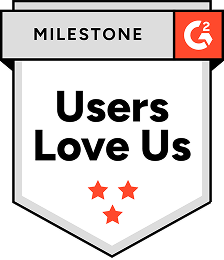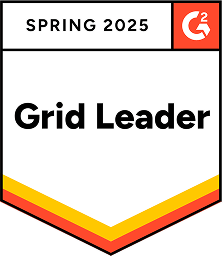Email subject line best practices: 15+ tips & tricks to boost open rates

In today's crowded digital landscape, your email subject line is your first (and sometimes only) chance to capture a prospect's attention. According to Hubspot, 64% of recipients use subject lines to determine whether they'll open an email or not; that means that crafting compelling openers isn't just a nice-to-have skill: it's essential for success.
But let's face it: coming up with attention-grabbing subject lines that actually convert can be more of an art than a science. In this article, we'll explore proven strategies and best practices to help you create subject lines that not only get your emails opened but also drive results.
Key takeaways from the article:
- Know thy audience: Create audience segments for your emails and craft personalized subject lines tailored to those groups. Understanding your recipients' demographics, interests, and pain points will help you craft more relevant subject lines that capture attention.
- Leverage curiosity: Pique interest with intriguing subject lines. Use specific, compelling details or pose thought-provoking questions to entice prospects to open your emails and learn more.
- Stay current and relevant: Incorporate timely events, seasons, or trends. Tying your subject lines to current events can increase their relevance to your audience.
- Optimize for length and format: Don't shy away from longer subject lines. While keeping it concise is generally good practice, longer subject lines that communicate value can often outperform shorter ones. Test different lengths and formats to see what resonates with your audience.
- Always be testing (ABT): Continuously refine your approach. Regularly test different subject line variations, analyzing open and engagement rates to figure out what tactics work best for your specific audience. But don't just stop there: keep using data to refine your strategy over time.
Finding the perfect subject line for that email you're sending to a prospect or a customer isn't just a nice-to-have; it's a must. According to HubSpot, 64% of your recipients will decide to open or delete an email based on its subject line.
In other words, if you don't nail down the right subject line, you've already lost over half of your audience. Well, 64% of them, to be precise.
But how do you know whether your email’s subject line is a good one? And when does it miss the mark? To help you figure out how to strike the right balance, we picked up a few tips from renowned email experts to guide you in your efforts.
The “do's” of writing great email subject lines
Subject lines are short, but – when they’re done correctly – can be extremely powerful tools for catching prospects’ attention in a world of noisy, overcrowded inboxes. Every word counts, so you want to maximize the space available to grab your reader's attention.
Here’s a sneak peek as to what’s on our “do’s” list - click on the different tips you want to read more about and you’ll jump right down to it:
- Know thy customer.
- Use human curiosity to your benefit.
- Pay attention to what your competitors are doing.
- Use seasons, months & events as inspiration.
- Longer-length subject lines generate higher open rates.
- Capitalization does matter — and lowercase gets more clicks.
- Emphasize customer problems (& how you can fix them).
- Always be testing (ABT).
Let’s dive in!
1. Know thy customer.
This is a relatively simple rule, but according to Kath Pay, founder of Holistic Email Marketing, most professionals don't give it the proper recognition it deserves. When you send an email, your message doesn't disappear into a magical mystery void. There are real people on the receiving end of your outreach – and they have thoughts, emotions, and needs just like you do. Those thoughts and feelings are the deciding factor between whether your email ends up opened or ignored.
Before brainstorming subject lines, carefully segment your email list. Get down into the nitty gritty and categorize all your prospects by demographics, behaviors, interests, location, and whatever other information you have. The more details you have, the easier it is to craft a brilliant, perfectly written subject line.
You can learn more about your leads and customers when they first opt into your mailing list. While most brands use a generic opt-in form requesting a name and email address, try including a few offbeat questions to pick up personal info. Ask what their pet's name is or what their favorite sports team is. Those little details help when it comes time to tailor your email subject lines, especially for brand-new customers.
Examples
- “Hey [NAME], mad about the [SPORTS TEAM] loss to [SPORTS TEAM OPPONENT]?”
- “[NAME], is your [RECIPIENT’S CAR MODEL] due for an oil change?”
- “We miss you, [NAME]! Save 20% on your next purchase.”
- “[NAME], your next [COFFEE TYPE] is on us!”
- “Curated [PRODUCT] recommendations just for [NAME].”
2. Use human curiosity to your benefit.
Consumers see a bazillion pieces of content every day. It's everywhere: on their daily news feed, social media accounts, websites, video forums, and – yes – even email. To cut through all the noise and get eyeballs on your message, try using subject lines designed to pique the recipient's interest.
According to Chase Dimond, an expert email marketer, curiosity is one of the most powerful emotional drivers there is f0r humans. Few people will turn down a truly intriguing subject line if it's compelling enough.
Examples
Instead of:
- “Our #1 tip to save money”
Try:
- “How I saved $5,000 on [EXPENSE] last Tuesday.”
Instead of:
- “Explore Portugal this summer!”
Try:
- “Forget Mykonos; the real summer vacation hotspot is the Algarve”
Instead of:
- “Grow your business fast with our customized [PRODUCT SOLUTION]”
Try:
- “[COMPANY] increased sales by 20% with this simple hack”
Notice that each original subject line is a bit bland and lacks originality. The rewritten subject lines go the extra mile to capture the recipient's interest and inspire a click.
{{cta-1}}
3. Pay attention to what your competitors are doing.
When you know your customers well enough, you can predict what emails they might subscribe to. For instance, if your brand sells mid-tier women's clothing, chances are good that most of your prospects get emails from other women's clothing brands.
Ian Brodie, a renowned digital marketing professional, recommends creating a throwaway email address and subscribing to all the brands you think your customers do. Then, you'll have a pretty good idea of what emails they see in their inbox — which can help you design subject lines that stand out.
For instance, if all the other women's clothing brands use discounts to entice clicks, you could try something different; maybe highlight your newest seasonal line or testimonials from a celebrity wearing clothes from your label. Whatever you can do to stand out will help you rise above the crowd.
Examples
You offer personal injury legal services, and your competitors use subject lines like this:
- “Get a free consultation with [COMPANY]”
- “Learn how much your case is worth”
- “Schedule a case evaluation with a top attorney”
Your law firm could liven up your prospects’ inbox with a subject line that sticks out:
- “How we won $10M in a recent car accident lawsuit”
- “Why [COMPANY] is ranked the leading personal injury law firm in [STATE]”
- “You deserve white-glove treatment after the injuries you suffered”
4. Use seasons, months & events as inspiration.
Most emails are usually time-bound, meaning they're only relevant briefly before losing their purpose. That's why you probably don't spend hours combing through your email history from 2015. (And if you do, it's high time to clear out your inbox and find a new hobby.)
While your email outreach results probably won't last longer than a few days or weeks, you can incorporate recent events and holidays to increase their relevance to customers. Chad S. White, the head of research for Oracle Digital Experience Agency, suggests listing occasions relevant to your brand each month and fitting them into your subject lines.
Examples
- “Pi Day Pizza Sale”
- “May the 4th be with you”
- “The Dog Days are almost over”
- “Planning to do the Polar Bear Plunge?”
- “Spread the kindness on World Kindness Day”
Highlighting timely occasions or events is an easy way to add a little flair to a cold sales email, especially if you don’t know much about the recipient. You can start warming up the connection by finding common ground everyone recognizes.
5. Surprisingly, longer-length subject lines generate higher open rates.
You might hear sellers expound upon the benefits of shorter subject lines and why keeping yours under a certain character length (like 60 characters) is a best practice.
Not so fast.
Email expert Dela Quist ran a study on subject line length and found the opposite: longer subject lines usually result in higher open rates.
Another expert, Chris Fenning, looked into the technical aspects of subject lines and learned that most email service providers limit them to 988 characters. That’s roughly 200 words. However, be aware that just 256 characters will be visible to the recipient — and that’s only if they open the email on a computer that supports that kind of resolution.
Some thoughts and arguments in favor of longer subject lines:
- Longer subject lines do risk being cut off, especially if your prospects are viewing them on a smartphone. But if the topic is compelling enough to inspire the reader, they'll open it, regardless of whether they can view the entire subject line.
- It’s also worth noting that some marketers and sellers have hypothesized that truncated, cut-off subject lines can help with piquing prospects’ curiosity: they want to know what comes next, if you will, so they open the email to learn more. There’s no hard data to back up this theory, but it’s certainly one worth testing out with your audience.
To be clear: we are not recommending that you insert your entire email copy into the subject line (major no-no!). That said, coming in at 61 characters versus 60 isn't going to make or break your open rates.
The takeaway? Toss concerns about meeting 60-character lengths out the window and aim for communicating value, not winning the award for shortest subject line.
Examples
Instead of:
- “Shop our sale!”
Try:
- “Take 50% off your order on Tuesday, June 15, + Free shipping”
Instead of:
- “Sign up for our next webinar”
Try:
- “Join the [EVENT] and learn why AI will revolutionize the digital marketing space”
Instead of:
- “Try out our newest [PRODUCT]”
Try:
- “As a loyal subscriber, you're invited to a 30-day free trial of our newest [PRODUCT]”
6. Capitalization does matter — and lowercase gets more clicks.
Capitalization in subject lines is a funny thing. Some experts absolutely swear by title case – where the first letter of each word is capitalized, except for articles. Others prefer sentence case – where the first letter of the first word is capitalized, and the remaining words are lowercase. Then, there are the outliers who prefer all lowercase subject lines.
Sentence case is the most common, with 60% of marketers using it according to an AWeber study. However, a tiny sliver (6%) of brands stick with lowercase only, and they find it leads to higher open rates — at least with their audiences.
What does that mean? Maybe nothing. Maybe something. It depends on your audience. If you're trying to connect with B2B customers, an all-lowercase subject line might look spammy or too informal. But a B2C audience with Gen Z subscribers might engage.
We recommend trying different capitalization methods among your audience and sticking with the one that generates the most clicks and fits your brand's style.
Examples
“Title Case”
- “Feeling Overwhelmed? Try This Hack.”
- “Here's a Gift From Us”
- “Don't Miss Your Next Deal”
“Sentence case”
- “Feeling overwhelmed? Try this hack.”
- “Here's a gift from us”
- “Don't miss your next deal”
“the outlier (all lowercase)”
- “feeling overwhelmed? try this hack”
- “here's a gift from us”
- “don't miss your next deal”
{{cta-1}}
7. Emphasize customer problems (& how you can fix them).
Your audience looks to your brand for a particular reason: they think you offer something to help them solve a problem or meet a need. Most people aren't sharing their email addresses for evening bedtime reading material. They'll only open your message if they know you have something that appeals to them. That means you need to understand their motivations and show them how you can help.
Experienced email marketer Amy Porterfield recommends calling out specific mistakes or issues that commonly afflict your audience and indicating how you can help them overcome the problem.
Examples
- “Here's how [PAIN POINT] can hurt your [BLANK] — and how we can help”
- “You don't need to [BLANK] to [SPECIFY GOAL]”
- “Do you make [MISTAKE]? Learn how to fix it.”
- “Is [BLANK] keeping you up at night? Sleep better with [PRODUCT]”
- “Don't let [BLANK] stop you from [SPECIFY GOAL]”
8. Always be testing (ABT).
Do you know that iconic scene from "Glengarry Glen Ross" when Alec Baldwin breaks down the ABCs of sales? “Always be closing.” Apply that golden tidbit of knowledge to subject lines and “always be testing.”
Comparing the performance of different versions to see which appeals to your audience is a major component of any successful email outreach campaign. Many campaigns have flopped because of a poorly executed testing strategy, resulting in a lot of time and money lost.
Once you narrow your list of subject lines for your next campaign, try them out among a small audience segment. Change a few aspects of each subject line, like:
- Capitalization
- Replace action verbs and adjectives
- Try throwing in an emoji
Then, release the test emails to your test subjects and see which one performs the best. If there's a clear winner, you know to go with that subject line when you email your remaining prospects.
The “don'ts” of writing great email subject lines
Now that we've covered a few key ways to level up your subject line game, let's look at some things to avoid.
Here’s a sneak peek as to what’s on our “dont’s” list - click on the different tips you want to read more about and you’ll jump right down to it:
- This isn’t fishing (or phishing) — don't bait and switch.
- Don’t do weird capitalization or overuse punctuation.
- Don’t overdo it with emojis.
- Don’t disguise your email subject line as a genuine reply.
1. This isn’t fishing (or phishing) — don't bait and switch.
There's a lot of clickbait out there, and it's not a good look for brands that engage in it. Stay true to whatever you offer, but don't make non-factual claims in your subject line just to get a click.
Kath Pay says an attention-grabbing subject line is great, but it's not a good fit if it leaves your customers feeling disillusioned or like they can't trust you.
You don’t want your brand to be known for sending clickbait emails that don’t deliver. Stick with what you can genuinely provide your customers rather than trying to trick them into reading emails just to boost your metrics.
2. Don’t use weird capitalization or overuse punctuation.
We talked about title case and sentence case capitalization earlier, which are legitimate options for subject lines. However, you want to avoid outlandish capitalization styles aimed to catch the subscriber's attention.
Similarly, steering clear of excessive punctuation (like multiple question marks or exclamation points) is another good practice to keep in mind. If you incorporate too much unnecessary punctuation, an email provider may flag your message as spam, damaging your reputation and sending your message straight to the recipient’s spam box. Mailchimp advises limiting punctuation marks to three per subject line.
Examples
- “GeT ThiS DeaL WhILe iT LastS”
- “Don't miss out on our one-day sale!!!!”
- “Why aren't you reading your emails, [NAME]???”
(For what it’s worth, these examples stressed us out - just imagine what they’d make your email recipients feel like!)
3. Don’t overdo it with emojis.
Ah, the age-old email question: should you – or should you not – put emojis in a subject line? Like title case capitalization, emojis have fans. And many brands use them in their email communications. Should you?
It really depends on your audience and your messaging style. For some brands, emojis are a fun way to liven up the subject line and connect with others. For others, emojis appear out of place and distracting.
If you think emojis might fit well with what you're selling, test them out among your audience and see if they elevate open rates. However, one thing to be very careful of is using emojis instead of words (which can confuse your prospects) or using so many emojis that your subject line becomes incomprehensible. You also run the risk that emojis may not render on certain devices.
If you include emojis, use them in moderation — no more than twice per email. Using more may cause email service providers to flag your message as spam.
Examples
These are fine…:
- “Get ready for fall with these stunning new sweaters 🍂”
- “Ends soon⏰: Get [PRODUCT] for $10/year”
- “Just in at [BRAND]: Our new style lineup 👗”
…But these probably wouldn’t fly – either with your recipients or spam filters:
- “🌅offers just hit your 📧”
- “💰💰💰💰💰Save money now 💰💰💰💰💰”
- “😻🌲🥰🌲”
4. Don’t disguise your email subject line as a genuine reply.
One trick some sellers use is inserting the term ”RE:” at the beginning of a subject line, giving the subscriber the impression it's a reply based on a past conversation. While the strategy may get you the click you're hoping for, it may lead to serious distrust once the reader opens it and sees that it’s promotional material. Forego trying to fool prospects and focus on building genuine connections.
Examples
- “RE: I've given it some thought, and this is what I came up with”
- “RE: You really need to try this”
- “RE: This only happens once in a lifetime”
{{cta-1}}
5 bonus tips for writing effective email subject lines
What else can turn your email subject line from "okay" to "fantastic"? Consider these tips.
Bonus tip #1: Understand your CTA.
Every email you send should have a purpose, whether it's conveying information, strengthening customer relationships, or making a sale. Know your purpose and how you'll frame your CTA in your subject line.
Bonus tip #2: Brainstorm 10-15 email subject lines before narrowing down your list.
Give yourself room to get creative with subject lines. Think outside the box and come up with various options before selecting two to three frontrunners for testing.
Extra bonus tip: AI platforms like Regie.ai can streamline this for you by instantly generating as many subject lines as you'd like, so you can choose the perfect one every time.
Bonus tip #4: Make a list of power words.
A power word is one that hits home with your audience, encouraging an emotional reaction or a specific action. Know which power words apply to your brand's messaging and incorporate them in your subject line. Here are a few examples of solid power words you can use:
- Awe-inspiring
- Breathtaking
- Mind-blowing
- Phenomenal
- Riveting
- Trounce
- Bonanza
- Skyrocket
- Jackpot
- Track record
- World-class
- Unsung
Using power words adds extra pizazz to your messages and can help them stand out in your audience’s inbox.
Bonus tip #4: Avoid sounding like a robot.
Incorporate sincerity into your subject line, and genuinely try to connect with your audience’s needs. Even if you don’t know much about your prospect yet, you can find ways to resonate with them. Some examples include:
- Tying your subject line with a current event, holiday, or occasion;
- Addressing a common pain point among customers; or,
- Highlighting relevant industry news that might interest the reader.
Bonus tip #5: Ask questions.
Making an inquiry is a great way to engage readers and encourage a click, especially if you’re trying to address specific pain points with your audience. Ian Brodie uses the question model in his subject lines, particularly when a product can resolve the recipient’s issue. Here are a few examples you can use for inspiration:
- “Have you ever experienced [PROBLEM]?”
- “Do you know why [SOMETHING] happens?”
- “Could you use a little help with [PAIN POINT]?”
Final thoughts
Writing solid email subject lines is both an art and a science: there's no perfect way to do it, and what works for one audience or one selling scenario may not work for another. We've explored various strategies, from leveraging curiosity and personalization to optimizing length and staying current with trends. But, at the end of the day, the most important things you can do are
- Understand your audience;
- Test different approaches; and,
- Continuously refine your technique.
As you apply these insights to your own email campaigns, keep in mind that improvement is an ongoing process. Don't be afraid to experiment and learn from both your successes and failures. With practice and persistence, you'll develop a keen sense for what resonates with your prospects, leading to higher open rates and, ultimately, more meaningful connections.
So, go forth and conquer those inboxes! Your next great subject line — and the opportunities it unlocks — awaits. Keep refining, keep testing, and most importantly, keep engaging with your audience in authentic and valuable ways.
Did you know AI can personalize subject lines & email copy for you?
Check out our article "How to use generative AI for personalized content creation" to learn more!
Regie.ai's AI Sales Agents can do all this for you - and more.
Book a demo today to see for yourself!
FAQs
Read more posts
View all BlogsNeed more help?
If you still have questions, make sure to check out our Help Center: there, you'll find all the tips & advice you'll need to get your team up & running with Regie.ai.









